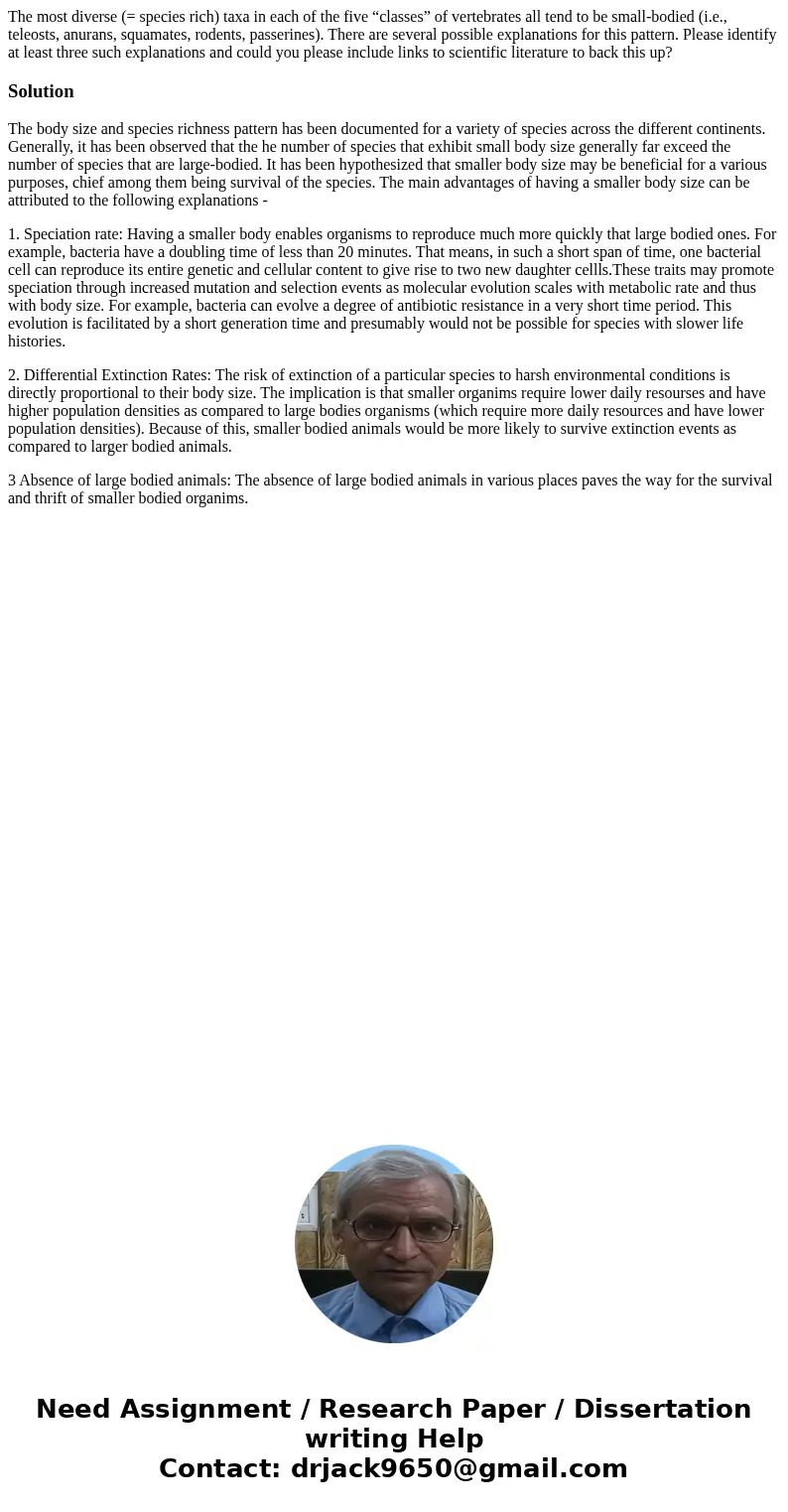The most diverse species rich taxa in each of the five clas
The most diverse (= species rich) taxa in each of the five “classes” of vertebrates all tend to be small-bodied (i.e., teleosts, anurans, squamates, rodents, passerines). There are several possible explanations for this pattern. Please identify at least three such explanations and could you please include links to scientific literature to back this up?
Solution
The body size and species richness pattern has been documented for a variety of species across the different continents. Generally, it has been observed that the he number of species that exhibit small body size generally far exceed the number of species that are large-bodied. It has been hypothesized that smaller body size may be beneficial for a various purposes, chief among them being survival of the species. The main advantages of having a smaller body size can be attributed to the following explanations -
1. Speciation rate: Having a smaller body enables organisms to reproduce much more quickly that large bodied ones. For example, bacteria have a doubling time of less than 20 minutes. That means, in such a short span of time, one bacterial cell can reproduce its entire genetic and cellular content to give rise to two new daughter cellls.These traits may promote speciation through increased mutation and selection events as molecular evolution scales with metabolic rate and thus with body size. For example, bacteria can evolve a degree of antibiotic resistance in a very short time period. This evolution is facilitated by a short generation time and presumably would not be possible for species with slower life histories.
2. Differential Extinction Rates: The risk of extinction of a particular species to harsh environmental conditions is directly proportional to their body size. The implication is that smaller organims require lower daily resourses and have higher population densities as compared to large bodies organisms (which require more daily resources and have lower population densities). Because of this, smaller bodied animals would be more likely to survive extinction events as compared to larger bodied animals.
3 Absence of large bodied animals: The absence of large bodied animals in various places paves the way for the survival and thrift of smaller bodied organims.

 Homework Sourse
Homework Sourse